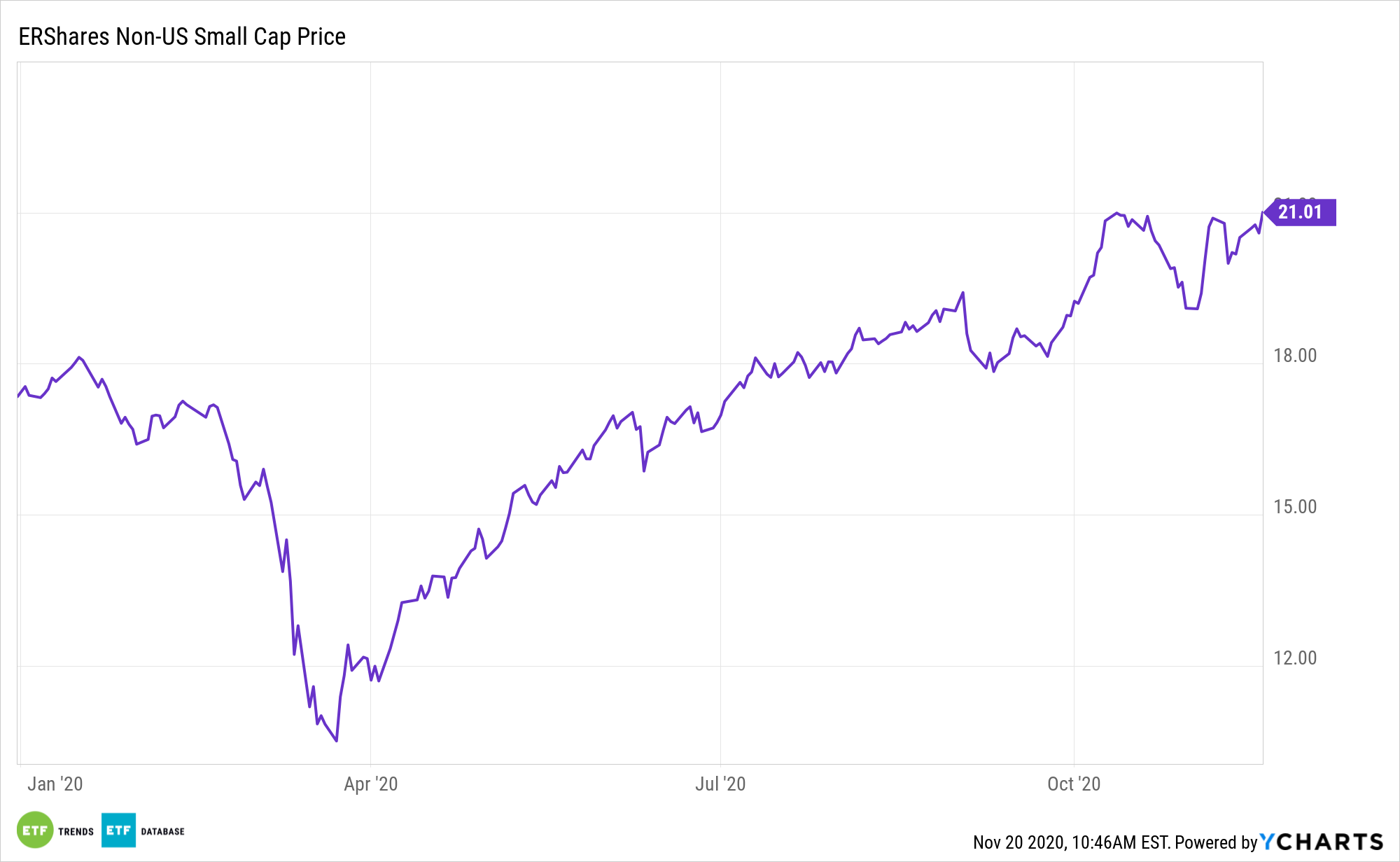Smaller stocks, including those hailing from ex-U.S. markets, are delivering big for investors in recent weeks. Many market observers expect this theme will continue into 2021, offering opportunity with the ERShares International Equity ETF (NYSEARCA: ERSX).
ERSX tracks 50 non-U.S. companies from around the world with market capitalizations between $300 million and $5 billion USD and the highest rank based on the six investment style factors.

The ERShares ETF selects the most entrepreneurial, primarily Non-US Small Cap companies, that meet the thresholds embedded in their proprietary Entrepreneur Factor (EF). ERShares’ ETF delivers strong performance across a variety of investment strategies without disrupting investors’ underlying risk profile metrics. Their geographic diversity enables them to harness global advantages through additional returns associated with currency fluctuations, strategic geographic allocations, comparative trade imbalances, and relative supply/demand strengths.
“There’s been major rush of money into foreign markets after the vaccine announcements, with both Developed and Emerging markets now outperforming the United States,” reports See It Market. “The U.S. Dollar continues to have a strongly bearish posture; oil remains above its 30 day moving average.”
Rotation Talk for Small-Caps
Large-cap technology equities might get all the fanfare in capital markets, but that doesn’t mean investors should shy away from small-caps. Getting small-cap exposure even in these uncertain times can allow investors to capture any potential upside that maximized large-caps may not be able to provide.
There are compelling reasons for asset allocators to embrace the unique factor layering methodology that backstops ERSX.
“Research by Bank of America found allocations to small caps had seen a ‘big jump’ in allocations and an ‘unambiguous rotation’ from large cap into small caps as 21% of respondents thought they would outperform large ones in 2021,” notes Money Management. “There had also been growth in allocations to emerging markets, which was the asset class respondents most expected to outperform in 2021, and in value stocks away from growth ones.”
Based on measures such as return on equity measures, international SMID companies are higher quality. They have been trading on average at a 40% discount to US small- and mid-caps. Yet investors have not taken advantage of this opportunity.
Increasing the allure of ERSX, international small-caps are generally export-oriented, globally structured, innovative, and have a high to dominant share of a niche market, often one in which the U.S. counterparts don’t compete effectively.
For more on entrepreneurial strategies, visit our Entrepreneur ETF Channel.
The opinions and forecasts expressed herein are solely those of Tom Lydon, and may not actually come to pass. Information on this site should not be used or construed as an offer to sell, a solicitation of an offer to buy, or a recommendation for any product.

